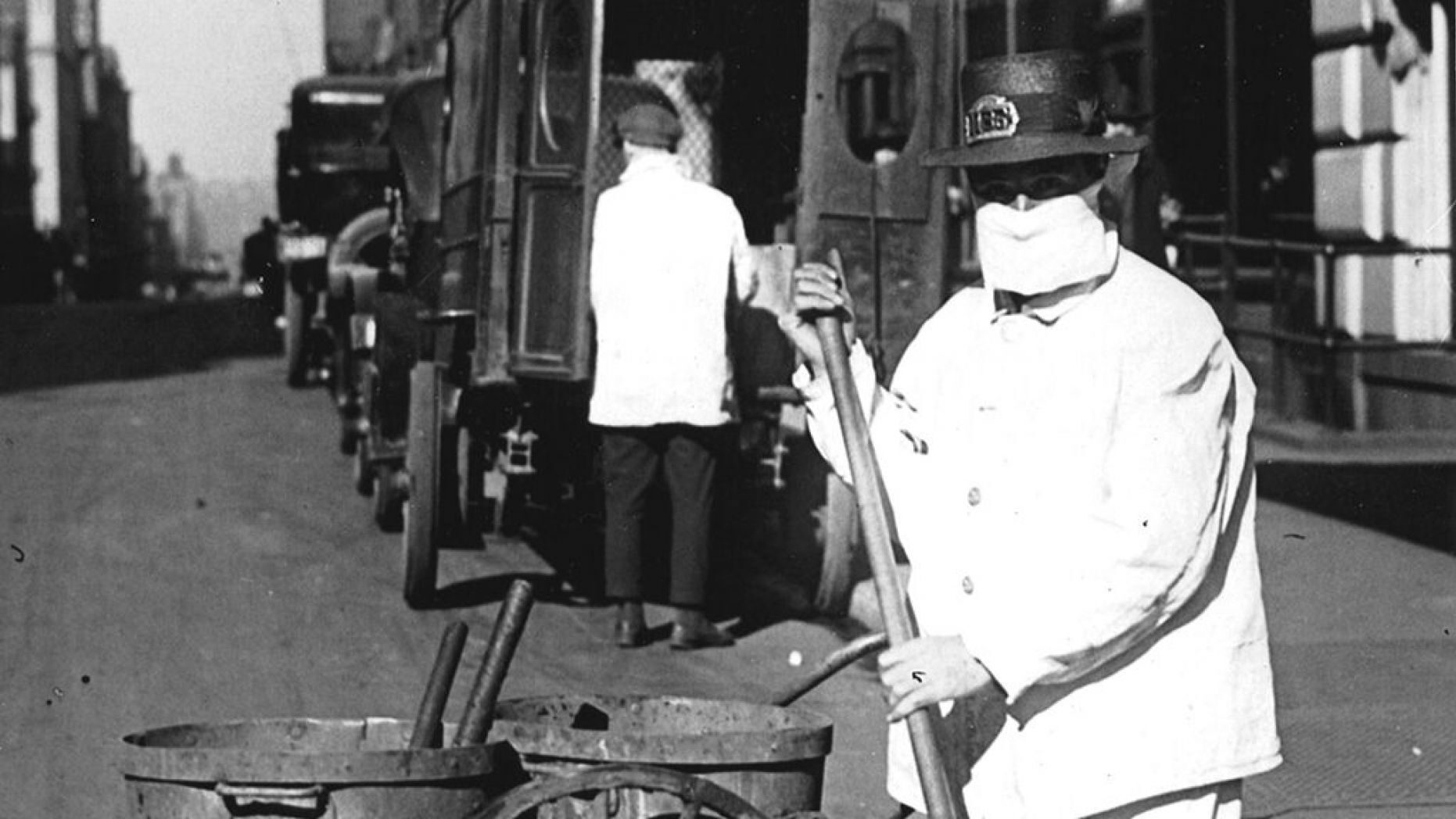Rebecca Grant: Pence’s coronavirus task force should take these lessons from NYC’s 1918 Spanish flu response

New York City’s swift response to the 1918 Spanish flu pandemic has some lessons for Vice President Mike Pence’s coronavirus task force. The key: go local.
So far, the Trump Administration is making smart moves to contend with the coronavirus CoVid-19, such as the barring non-U.S. citizens traveling from China, implemented Feb. 2. Pence has already met with 40 state, county and local officials. That’s key because while the White House must help with international coordination and requesting funding, if a national epidemic occurs, the disease will be fought in America’s cities and towns.
Right now, “we’re at a very low level and we want to keep it that way,” President Trump said Wednesday.
CORONAVIRUS: HOW COUNTRIES AROUND THE WORLD ARE REACTING TO THE OUTBREAK
But, the degree of risk could change quickly, said Alex Azar, Secretary of Health and Human Services.
If it does, a successful response would come down to how state and local officials react.
A New York city street sweeper wears a mask to help check the spread of the influenza epidemic, October 1918. In the view of one official of the New York Health Board, it is ‘Better be ridiculous, than dead’. (Photo by PhotoQuest/Getty Images)
A New York city street sweeper wears a mask to help check the spread of the influenza epidemic, October 1918. In the view of one official of the New York Health Board, it is ‘Better be ridiculous, than dead’. (Photo by PhotoQuest/Getty Images)
In the fall of 1918, New York City used everything from Boy Scouts to Tammany Hall politicians to combat the worst public health crisis in human history: the Spanish flu.
Already the Spanish flu, an avian virus of the H1N1 family, was ravaging U.S Army camps training millions of American troops for World War I. Before it ended, the Spanish flu claimed at least 50 million lives around the globe and 675,000 in the United States, according to the CDC.
“The 1918 influenza pandemic was the deadliest event in all of human history,” scientist David M. Morens of the National Institute of Health told the New York Times in 2009. “It killed more people than any war, any pandemic, the Black Death, AIDS, you can pick your terrible event. Everybody lost a friend or family member.”
Could the coronavirus become the next Spanish flu?Video
New York City sprang into action in the overwhelming “second wave” of the epidemic from September-November 1918. The “flu czar” was Public Health Commissioner Dr. Royal S. Copeland. Copeland changed daily routines for New Yorkers in the fall of 1918 in order to focus on the number one priority of the day: prevention. Among his measures:
Staggered business hours
Factories, businesses, and theaters were assigned staggered start times to reduce train and subway crowding.
Women wear cloth surgical-style masks to protect against influenza. A worldwide influenza epidemic killed 20 million people between 1918 and 1920.
Women wear cloth surgical-style masks to protect against influenza. A worldwide influenza epidemic killed 20 million people between 1918 and 1920.
Schools stayed open
Copeland reasoned that the schools in 1918 were often more sanitary than the homes. Teachers checked children daily and sent home kids with symptoms. “I believe that the children are better protected in the schools than they would be in the streets,” Copeland told the New York American on Sep. 28, 1918.
Quarantines
The sheer number of cases prevented full isolation. Influenza cases in private homes and apartments stayed put. Victims from crowded boarding houses and tenements were taken to municipal hospitals.
Checking ships
The flu arrived in New York on inbound vessels, so port authorities began stopping and testing crew and passengers.
More from Opinion
Dr. Marc Siegel & Charles Couger: On frontline of coronavirus fight, University of Nebraska plays key role
Dr. Manny Alvarez: Coronavirus – How to prepare and protect yourself as US gears up to fight it
“Spitting spreads death”
Remember 1918 was the era of tobacco chewing and spittoons. Boy Scouts handed out “no spitting” cards and courts fined numerous spitters. Press and official leaflets urged citizens to cover their coughs and sneezes, stay out of crowds and call a doctor right away if they showed flu symptoms.
Gathering data
Copeland needed data on how the flu was spreading. Via the New York Times, Copeland called on the Democratic political machine known as Tammany Hall to fan out in the precincts to help identify and count Spanish flu sufferers. He also began requiring doctors to report their flu cases.
CLICK HERE TO SIGN UP FOR OUR OPINION NEWSLETTER
The media
The savvy Dr. Copeland spent some of his emergency funding on posters and leaflets to get the word out on prevention and what to do. He also briefed the press often, as newspapers like the New York Times and New York Evening Post played a huge role in updating the public and carrying health messages.
Even with Copeland’s measures, the toll was grim. New York shipyards reported a 40 percent decline in productivity during the epidemic, according to the CDC. About 30,000 died in New York City out of a population of 5.6 million. But cities like Philadelphia suffered much higher proportional rates of death, according to public health researcher Francesco Aimone. Copeland said, “New York got off easier than other cities” as the epidemic receded.
CLICK HERE TO GET THE FOX NEWS APP
New York City showed the powerful impact of putting local health officials and medical professionals in the lead and backing them up with money, new laws and the full force of government as needed.
As for Dr. Copeland, New York didn’t forget. He was elected U.S. Senator from New York in 1922 and served until his death in 1938.



 Creators of mankind
Creators of mankind Description of “Tall white aliens”
Description of “Tall white aliens” Where they came from?
Where they came from? About hostile civilizations
About hostile civilizations The war for the Earth
The war for the Earth “Tall white aliens” about eternal life
“Tall white aliens” about eternal life Video: “Nordic aliens”
Video: “Nordic aliens” Aliens
Aliens Alien encounters
Alien encounters The aliens base
The aliens base UFO
UFO Technology UFO
Technology UFO Underground civilization
Underground civilization Ancient alien artifacts
Ancient alien artifacts Military and UFO
Military and UFO Mysteries and hypotheses
Mysteries and hypotheses Scientific facts
Scientific facts


















